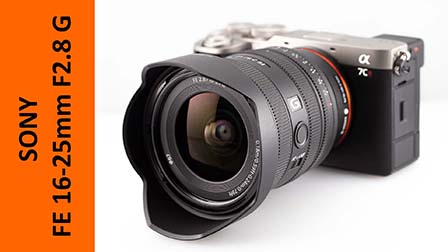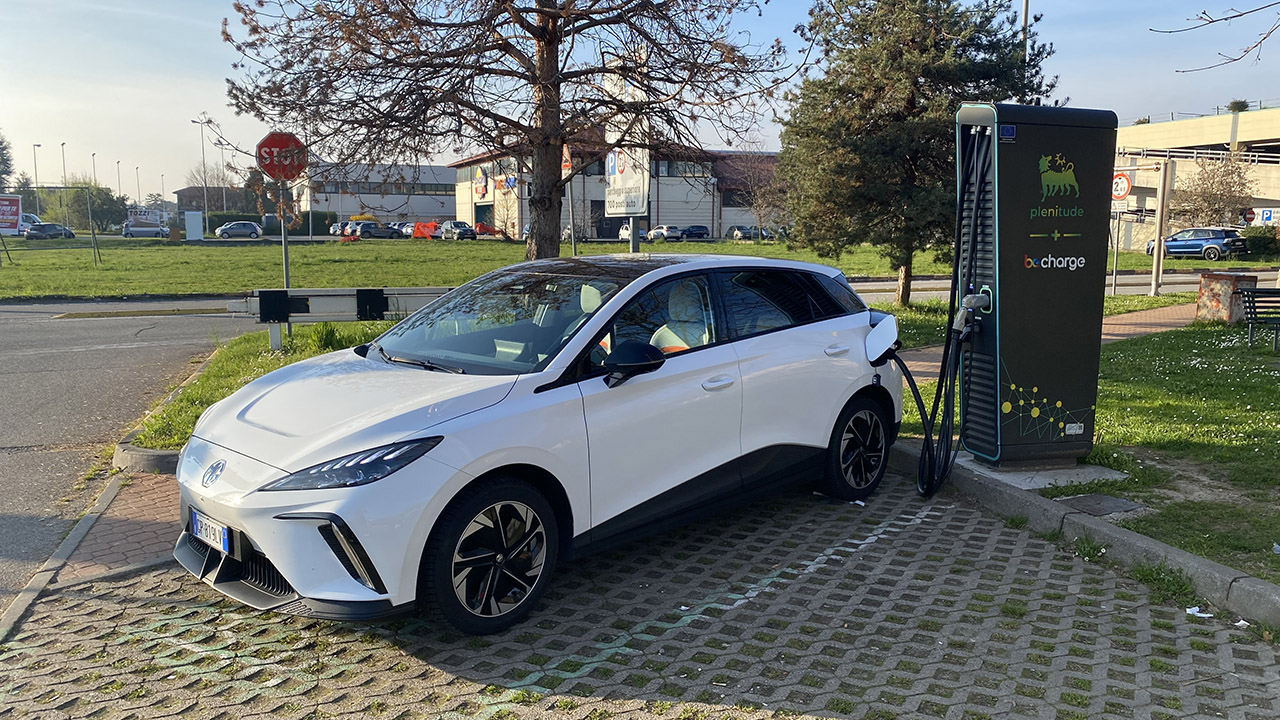|
|||||||
|
|
|
 |
|
|
Strumenti |
|
|
#1 |
|
Senior Member
Iscritto dal: Nov 2001
Città: Padova
Messaggi: 1635
|
[Space] NASA - Deep Impact - Send your name to a comet!
NASA - Deep Impact Mission
Jet Propulsion Laboratory with University of Maryland and Ball Aerospace & Technology Corp. Deep Impact è la prossima missione scientifica della NASA. Il suo scopo è quello di raggiungere la cometa Tempel 1 che passerà vicino alla Terra il prossimo luglio del 2004 e far schiantare una una sonda, detta Impactor, in modo da creare un cratere di più di 25 m di profondità e 100 di diametro, così da poter studiare l'intero ghiacciato di una cometa. L'analisi si protrarrà per 9 mesi e verrà eseguita dalla sonda in orbita attorno alla cometa (detta "flyby spacecraft") e dall'impactor all'interno del cratere. Il cratere sarà scavato utilizzando la sola energia cinetica della sonda d'impatto, ben 19 Gjoules (pari a 4,8 tonnellate di TNT), generata dalla massa della sonda (370 kg) e dalla velocità di impatto (pressapoco 10,2 m/s). Brevemente: - Lancio: 30 dicembre 2004 dal KSC con un razzo Delta II - Incontro (randeveuz) con la cometa Tempel 1: 4 luglio 2004 - Separazione dell'Impactor: 24 prima del randeveuz - Velocità d'impatto: 10,2 m/s - Distanza minima sonda orbitante: 500 km - Fine missione: Agosto 2005 Fatti della missione (tutte le informazioni disponibili): Mission - Fact Sheet  Per questa missione la NASA ha preparato una speciale campagna per coninvolgere direttamente la gente: Send your name to the comet! E' aperta a chiunque, da tutto il mondo, e permette di inserire il proprio nome nel database, che poi verrà inciso su un disco che sarà inserito all'interno della sonda d'impatto che si schianterà sulla cometa, rimanendo lì per l'etenità. Send your name to a comet! What is the Send Your Name to a Comet campaign? Glad you asked! The Deep Impact mission will dig deep beneath the surface of a comet to get a first-ever look at the frozen collection of ice and dust left over from the formation of the solar system. Why are we doing it? We learn about comets by studying the ice and dust that flows naturally from a comet as it is warmed by the Sun. But we will learn additional information by getting down inside where the more pristine material is hidden. Scientists expect to find hidden clues about how the solar system formed when they look at the structure of Comet Tempel 1. To accomplish our goal, we will have to make a deep crater in the surface with a 370 kg (820 lb) copper-nosed impactor spacecraft. Telescopes and instruments on the sister spacecraft, the flyby, will observe the impact from a safe distance of 500 km (300 mi). Sound exciting? Want to be part of it? Well, you can! You can send your name crashing into Comet Tempel 1 by going to Send Your Name to a Comet. Once you have filled in and submitted the form, your name will be recorded along with many others on a disc mounted on the impactor spacecraft. You may choose to print out a personalized commemorative certificate. Bookmark your certificate for later viewing and tell your friends, so they can send their name to a comet as well! Dopo aver inserito il nome vi verrà rilasciato un certificato elettronico personale. Ad oggi si sono iscritte quasi 500.000 persone. Fate presto: termina il 31 gennaio 2004.
__________________
Cosmos Pure | Core i7 860 | P7P55D-E Deluxe | 16GB DDR3 Vengeance | HD5850 | 2x850PRO 256GB | 2xRE3 250GB | 2xSpinPoint F3 1TB |
|
|

|
|
|
#2 |
|
Senior Member
Iscritto dal: Mar 2001
Messaggi: 1861
|
non è per togliere poesia a tutto ciò ma... insomma è come arrivare in cima all'everest e buttare delle cartacce per terra dopo averle firmate, o incidere il proprio nome su un albero secolare... che gusto c'è? Ci sono modi migliori per lasciare tracce del nostro passaggio...
|
|
|

|
|
|
#3 |
|
Senior Member
Iscritto dal: Sep 2001
Città: Black Mesa Research Point: Lambda Permission Level: C
Messaggi: 246
|
bella l'idea dei nomi... cmq questo disco verrà sicuramente polverizzato all'impatto vista la potenza stimata...
|
|
|

|
|
|
#4 |
|
Senior Member
Iscritto dal: Jun 2003
Città: Lontano Lontano icq#:121214179 Skype:sniperpat peterpat@gmail.com modalità:Fancazzamento continuo
Messaggi: 1676
|
già fatto!
ti rilasciano pure un attestato che puoi stampare... l'ho fatto 4 mesi fa OLD
__________________
Snu snu |
|
|

|
|
|
#5 |
|
Senior Member
Iscritto dal: Nov 2001
Città: Padova
Messaggi: 1635
|
bravo patlabor!
__________________
Cosmos Pure | Core i7 860 | P7P55D-E Deluxe | 16GB DDR3 Vengeance | HD5850 | 2x850PRO 256GB | 2xRE3 250GB | 2xSpinPoint F3 1TB |
|
|

|
|
|
#6 |
|
Senior Member
Iscritto dal: Nov 2001
Città: Padova
Messaggi: 1635
|
bumpage
__________________
Cosmos Pure | Core i7 860 | P7P55D-E Deluxe | 16GB DDR3 Vengeance | HD5850 | 2x850PRO 256GB | 2xRE3 250GB | 2xSpinPoint F3 1TB |
|
|

|
|
|
#7 |
|
Senior Member
Iscritto dal: Oct 2000
Città: UK
Messaggi: 7408
|
Fico! Fatto anche io
__________________
"Questo forum non è un fottuto cellulare quindi scrivi in italiano, grazie." (by Hire) Le mie foto su Panoramio - Google Earth |
|
|

|
|
|
#8 | |
|
Senior Member
Iscritto dal: Jun 2003
Città: Lontano Lontano icq#:121214179 Skype:sniperpat peterpat@gmail.com modalità:Fancazzamento continuo
Messaggi: 1676
|
Quote:
però ne voglio fare un altro con il mio nick
__________________
Snu snu |
|
|
|

|
|
|
#9 | |
|
Senior Member
Iscritto dal: Oct 2000
Città: UK
Messaggi: 7408
|
Quote:
__________________
"Questo forum non è un fottuto cellulare quindi scrivi in italiano, grazie." (by Hire) Le mie foto su Panoramio - Google Earth |
|
|
|

|
|
|
#10 |
|
Senior Member
Iscritto dal: Jul 2000
Città: La città più brutta della Toscana: Prato
Messaggi: 6671
|
il mio nome è nella storia
|
|
|

|
|
|
#11 |
|
Senior Member
Iscritto dal: Nov 2003
Messaggi: 1815
|
Fatto!
__________________
Membro fondatore dell'Hardware Upgrade Aerospace Group Viva lo StronZio |
|
|

|
|
|
#12 |
|
Senior Member
Iscritto dal: Oct 2000
Città: UK
Messaggi: 7408
|
Adesso gli intasiamo il sito...
__________________
"Questo forum non è un fottuto cellulare quindi scrivi in italiano, grazie." (by Hire) Le mie foto su Panoramio - Google Earth |
|
|

|
|
|
#13 | |
|
Senior Member
Iscritto dal: Oct 2000
Città: UK
Messaggi: 7408
|
Quote:
__________________
"Questo forum non è un fottuto cellulare quindi scrivi in italiano, grazie." (by Hire) Le mie foto su Panoramio - Google Earth |
|
|
|

|
|
|
#14 |
|
Senior Member
Iscritto dal: Jun 2002
Messaggi: 14504
|
E se poi gli alieni trovano il mio nome e mi vengono a cercare?

__________________
Robert Charles Wilson : Spin 
|
|
|

|
|
|
#15 | |
|
Senior Member
Iscritto dal: Jun 2003
Città: Lontano Lontano icq#:121214179 Skype:sniperpat peterpat@gmail.com modalità:Fancazzamento continuo
Messaggi: 1676
|
Quote:
allora ne devo fà tre.... ok!
__________________
Snu snu |
|
|
|

|
|
|
#16 | |
|
Senior Member
Iscritto dal: Jul 2000
Città: La città più brutta della Toscana: Prato
Messaggi: 6671
|
Quote:
|
|
|
|

|
|
|
#17 |
|
Senior Member
Iscritto dal: Nov 2001
Città: Padova
Messaggi: 1635
|
magari porta sfiga... tiè!
__________________
Cosmos Pure | Core i7 860 | P7P55D-E Deluxe | 16GB DDR3 Vengeance | HD5850 | 2x850PRO 256GB | 2xRE3 250GB | 2xSpinPoint F3 1TB |
|
|

|
|
|
#18 |
|
Senior Member
Iscritto dal: Mar 2001
Messaggi: 1861
|
volete vedere l'orbita della cometa in tempo reale?
ragazzi da non perdere questo link.... è davvero interessante! http://neo.jpl.nasa.gov/cgi-bin/db_s...&search=Search |
|
|

|
|
|
#19 |
|
Senior Member
Iscritto dal: Sep 2001
Città: de_legato
Messaggi: 792
|
sarebbe stato + carino se lo avessero fatto per una sonda da mandare verso marte
__________________
---------------------------------------------- File reality.sys corrupted, Reboot Universe? Y/N ---------------------------------------------- |
|
|

|
|
|
#20 |
|
Senior Member
Iscritto dal: Nov 2001
Città: Padova
Messaggi: 1635
|
Deep Impact: NASA's crash course in comet science
BY JUSTIN RAY SPACEFLIGHT NOW NASA launches a space mission in January to blast a hole in the side of a comet and learn more about the make up of these icy bodies.  The Deep Impact mothership releases its copper laden impactor at Comet Tempel 1. Credit: NASA/JPL As ancient wanderers of the solar system laden with primordial material frozen in time, comets offer humanity clues to some of the most fundamental questions about conditions when the planets were forming more than four billion years ago. Buried inside the hearts of these rocky snowballs are the pristine building blocks that hold the chemical records from the solar system's creation. Comets likely peppered the young Earth, possibly delivering the organic materials needed for the rise of life, the water for our oceans and even playing a role in generating the atmosphere. To capture an unprecedented glimpse at this preserved material, NASA's Deep Impact spacecraft is scheduled for launch January 12 carrying a copper bullet that will be fired into the heart of Tempel 1 next July 4, carving out a stadium-sized crater. "We're doing this to discover the comet's structure and makeup," said Rick Grammier, NASA's Deep Impact project manager. "This is like swinging an 820-pound slug of copper at this thing and seeing what happens." Sophisticated instruments on the Deep Impact's mothership will record the blast and peer into a comet's interior for the first time. Observatories around the globe, plus the Hubble and Spitzer space telescopes, will be watching the aftermath to collect crucial information about the dusts and gases blown out of Tempel 1. Conquering the mysteries "My interest in comets all along has been trying to understand the chemical composition and to use that to put constraints on our theories of what conditions were like 4.5 billion years ago when the whole solar system was forming," said Michael A'Hearn, astronomer from the University of Maryland and the Deep Impact principal investigator. "What we see coming out of comets as gas and dust is stuff that has been modified because it is very near the surface, and every time the comet goes around the sun the surface gets heated. So there have been changes in the surface layers... What I really want to do is figure out how different the surface is from what's inside. Discovered on April 3, 1867 by Ernst Wilhelm Leberecht Tempel in Marseilles, France, Comet 9P/Tempel 1 currently circles the sun every 5.5 years. Its orbit lies between Mars and Jupiter, providing the Deep Impact mission a perfect target for reaching with a modest launch vehicle, striking at high speed and being visible from Earth at impact about 130 million kilometres away.  Deep Impact launches in January and slams its impactor into Comet Tempel 1 in July. Graphic: Mark McLellan/Astronomy Now The exact size and shape of the comet's nucleus is unclear from observations made to date. It is thought to be elongated and six kilometres in diameter. How Tempel 1 will react to the impact is also a mystery, but scientists do not believe the comet will shatter apart. "It has turned out that the physics of how the impact occurs is also a large unknown because we know so little about fragility or strength of the cometary nuclei generally. We certainly know nothing about this particular comet," A'Hearn said. "There is an outside chance that we could break the comet. We don't think that will happen... We don't think that the comet can propagate a shockwave through from one side to the other so that you can break it because we don't think it's that strong and cohesive everywhere." Starting two months before the encounter, Deep Impact commences its science observations in earnest, painting a picture of what the spacecraft should expect at arrival and giving ample time to change the approach strategy if necessary. Specifically, mission planners want to pin down how the comet nucleus rotates and examine the jets of gas and dust streaming away from Tempel 1. Demolition day One day before the big bang, the mothership releases the impactor. This one-metre diameter, 0.8-metre tall projectile is equipped with an autonomous navigation computer, cameras and a propulsion system to guide itself toward a suitable impact point that is well lit. The mothership performs an evasive manoeuvre, plotting a trajectory to fly past the comet shortly after the impact. "Early images from the impactor are mainly for navigation... to make sure that it hits in an illuminated area and not in a dark area. As we get closer, those images become important for science because as we get closer and closer we will get higher and higher spatial resolution. We will directly see the change in texture as you change spatial scale. Assuming the camera on the impactor survives until very shortly before impact, these will be the highest resolution pictures ever of a cometary nucleus, much higher than we will get from the flyby [spacecraft]," A'Hearn said. The flyby craft will be using its spectrometer to identify and quantify the materials across the comet's dust- and gas-filled coma head and taking images in a wide variety of different colours. Since the nucleus is believed to have a 41-hour rotational period, less than half will be seen at good resolution. "Shortly before the time of impact, the flyby spacecraft determines how fast it is having to rotate to keep the high-resolution camera pointed at the nucleus. It uses that to calculate when it will be at closest approach and then knowing the difference velocity, when the impactor will impact. It sends that information up to the impactor so the impactor can optimise the imaging sequence at the expected time of impact. Flyby uses it internally, also, to optimise the imaging sequence for the time of closest approach," A'Hearn said. Information from both craft is fed back to Earth in real-time in case comet shrapnel fatally wounds the mothership during the encounter. Hit and run The 370-kilogramme impactor and comet collide at 10.2 km/s, releasing the energy equivalent of 4.4 tonnes of exploding TNT and creating the ultimate fireworks display for Americans on the Fourth of July. "We put the impactor in the comet's path so that the comet overtakes it. So it is like standing in the middle of the road with semi truck bearing down on you," Grammier said. The intense forces vaporize the projectile as the circular crater is rapidly excavated. "We expect it could put a crater about the size of a house up to the size of a football stadium and it could be anywhere from seven to 14 stories deep. "As a result of forming the crater, it will throw out a bunch of the surface and interior material that is displaced. It will come up in a big cloud that will reflect the sunlight. So you will see a large brightening, and you will see that brightening from telescopes on Earth as well. Then you will see it slowly dissipate as the material either settles back down onto the comet itself or becomes part of its coma dust cloud. What we are hoping to see to from the flyby spacecraft viewpoint is being able to look all the way down into the interior of the crater and determine what its materials are made of," Grammier continued. "Since these are the original remnants of the solar system formation, not knowing how the exterior of a comet relates to interior, what we are hoping to do is expose all of that fresh material and see the material that was actually present at the formation of the solar system." The impact occurs with the mothership 8,600 kilometres away and closing fast. The medium-resolution camera will be taking pictures as swiftly as possible to capture the moment of impact. "We are hoping to catch a bright flash that will last less than a second by taking four or eight frames per second," A'Hearn said. The high-resolution camera snaps pictures at a slower pace.  An artist's concept shows the Deep Impact mothership watching the impactor smash into Comet Tempel 1. Credit: Ball Aerospace & Technologies Corp. Scientists expect the materials thrown out of the freshly bored hole will settle within a few minutes, permitting good visibility into the crater. The mothership has less than 14 minutes to make its observations while zooming toward the comet before passing by Tempel 1 at a distance of 500 kilometres. The craft enters a "shield mode" to protect itself from the powerful sandblasting during flight through the coma at closest approach. "Our baseline is it will take 200 seconds to form the crater, but uncertainties in the density of the nucleus - something that we just don't know - the crater could take as long as 600 seconds to form. This was one of our mission design problems, making sure we had long enough interval to observe so that we make sure the crater finished forming before we flew by but keeping the interval small enough that we weren't so far away at the time of impact that we had no resolution. This what led us to the 800-second window between impact and the going into our shield mode through the innermost coma," A'Hearn said. Surviving the getaway Deep Impact has just one shot at grabbing scientific data on the primordial material packed inside the comet. "We do maps across the nucleus after the impact to try and get spectra of the crater floor, see how different it is from the neighbouring terrain that is undisturbed," A'Hearn said. "We take some spectra off the limb to look at the gases that are coming out of the crater. As we get very close, we actually have to let the camera drift a little and take a couple of images to make sure we get crater in the high-resolution camera." About 50 seconds before closest approach, the flyby craft orients itself with protective shielding guarding against a destructive hit by comet dust.  The mothership spacecraft is seen here over the tiny impactor during final testing. Credit: NASA-KSC "We've designed extra shielding on certain parts of the spacecraft. So when I say it turns to shield mode, what that means is it actually places those shields in the direction of the cometary dust and debris. That is meant to protect the spacecraft itself from any particle hits. That shielding was designed based on what we know today of probable particle sizes, distribution and density at that distance from the comet," Grammier said. Despite the added protection, the mothership will be relaying its pictures and information to Earth live in case the craft doesn't survive the encounter to tell the tale afterward. "There are worries, that is why we are transmitting as much as we can in real-time, as much as the communications system will allow us to," A'Hearn said. "The engineers have predicted that the probability of a fatal hit is down at the one or a couple percent level, given the amount of shielding we have." Once through the dangerous region, the departing mothership manoeuvres to observe the comet's back side a quarter-hour after closest approach. "We fly through the innermost coma, fly through the orbital plane and then turn around and look back... to take images of the other side. When we take pictures of the other side, the crater itself will be hidden, but we will still be looking to see if we can see ejecta from the crater. A likely scenario is that after we make the crater, there will be a lot spontaneous outgasing from the floor of the crater because there is very volatile ice near the surface that used to be buried deeply. There is a reasonable chance that we would see a new jet in the coma coming from the crater - and we would see it where it comes out from behind the limb of the nucleus," A'Hearn said. Aftermath "We also use these look-back images to figure out the three-dimensional shape of the nucleus since we don't get to see a full rotation. We do the look-back monitoring for up to a day after impact." Ground-based telescopes in Hawaii will have prime viewing with the comet high in the sky at the time of impact, while the southwestern U.S. and Baja California will have Tempel 1 low in the sky. But a global campaign is underway to provide thorough monitoring of the comet before and after the collision with special imaging techniques.  An artist's concept shows the Deep Impact mothership watching the comet collision. Credit: Ball Aerospace & Technologies Corp. "We may create this new jet that may persist for hours or days or weeks or even months. So we are looking for observations afterwards," A'Hearn said. "We are trying to get complete longitude coverage so we can monitor the comet continuously from something like four days before the impact - two rotation periods - until a week after the impact." The $320 million mission follows NASA's Stardust project that flew past Comet Wild 2 in January, catching dust particles for return to Earth in 2006. The European Rosetta mission is currently flying to Comet Churyumov-Gerasimenko where a tiny lander will be dispatched to the frigid nucleus. If the Deep Impact mothership remains in good health, NASA could route the craft to other comets for close-up imaging by the onboard cameras, A'Hearn said.
__________________
Cosmos Pure | Core i7 860 | P7P55D-E Deluxe | 16GB DDR3 Vengeance | HD5850 | 2x850PRO 256GB | 2xRE3 250GB | 2xSpinPoint F3 1TB |
|
|

|

|
| Strumenti | |
|
|
Tutti gli orari sono GMT +1. Ora sono le: 13:57.





















